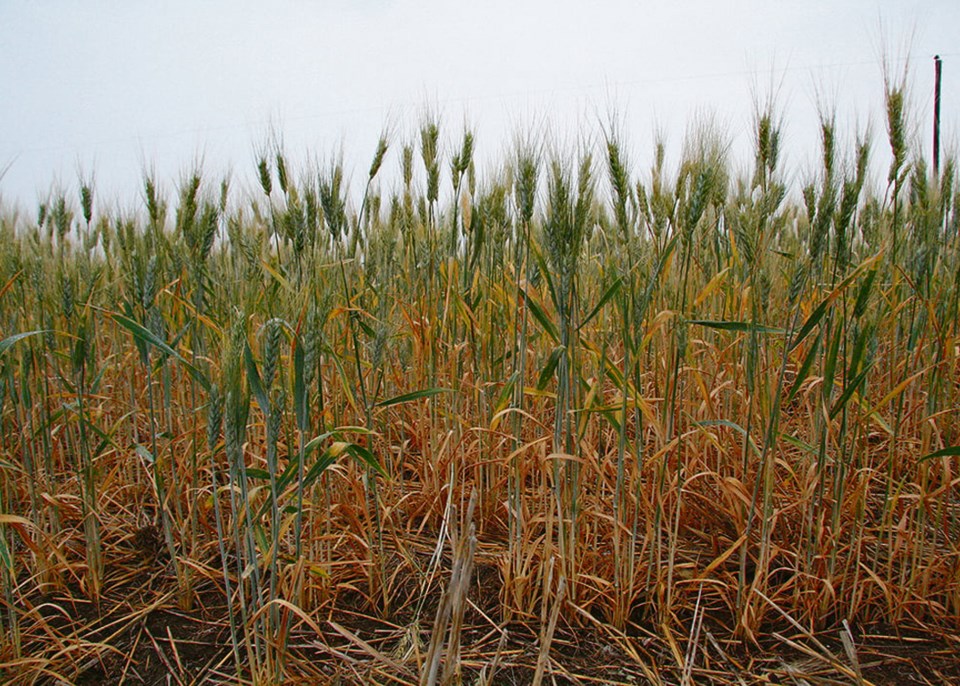Crops are not faring well in Alberta and Saskatchewan.
“Conditions are deteriorating in both provinces,” said MarketsFarm analyst Bruce Burnett.
Crops in southern and central Alberta and western Saskatchewan are in particularly rough shape because of drought.
Burnett is especially concerned about Canada’s durum and lentil crops, which are primarily grown in those areas.
There are good crops in eastern Saskatchewan and Manitoba, but even in those regions yields will be down from last year and closer to the long-term average.
“We are looking at a below-average crop,” he said.
Derek Squair, president of Exceed Grain Marketing, agreed with that assessment.
In Alberta, anything north of Red Deer is generally doing well and everything south is mostly in bad shape.
“In the areas that aren’t irrigated, the cereals especially aren’t looking so good,” he said.
Conditions in Saskatchewan are deteriorating. Some of the areas that were wet in June are now dry. There has been very little rain this growing season.
“Thank goodness we’ve had some cooler temperatures in Saskatchewan,” said Squair.
“It’s helping.”
He agrees with Burnett that the durum, lentil and mustard crops are in the biggest trouble because they are primarily grown in southwest Saskatchewan and southern Alberta.
Crops in the northern part of Saskatchewan are generally in pretty good shape, depending on thunderstorm activity.
“Where those hit-and-miss events happened is the difference between a below-average and maybe an average crop,” said Squair.
There has been an improvement with Manitoba’s crops due to well-timed rains.
“Overall, Manitoba is in pretty good shape. They’ve got some problem areas, but I would call it manageable,” he said.
Squair said crops are average to slightly-below-average in the “good” areas of the Prairies. In the trouble spots, yields will be anywhere from 10 to 50 percent below normal.
Grasshoppers are “taking hold” in some of the driest regions.
“There could be some real big reductions from average in those areas,” he said.
Rain was in the forecast for a good chunk of the western Prairies for July 18 and 19, which is past The Western Producer’s publication deadline.
The large system was forecast to deliver between 13 and 38 millimetres of rain in a wide swath from south-central Alberta to northeast Saskatchewan.
“The people who get the rains will at least arrest the downward slide,” said Burnett.
But for many farmers, the moisture will arrive too late to do much good.
“I’m looking at a barley field here in Kindersley right now that’s probably two weeks away from harvest,” he said during a July 17 interview.
Forty-five percent of Alberta’s crops rated good to excellent, according to the July 14 Alberta Crop Report.
That is well below the five-year average of 66 percent and the 10-year average of 68 percent.
Durum, mustard and flax are the lowest rated crops in Alberta, with all three in the 27 to 36 percent good-to-excellent range.
Mackenzie Hladun, crops extension specialist with Saskatchewan Agriculture, had some comments that conflicted with what Burnett and Squair were saying.
She said “crops are doing pretty good” in her province, despite less-than-ideal conditions.
Special crops like mustard and canaryseed are struggling, but that is not the case with the major crops.
“A lot of our crops are really faring well,” said Hladun.
That comment is not reflected in the province’s crop condition ratings.
Only 50 percent of the spring wheat crop rated good-to-excellent as of July 10. The ratings have been on a steady decline and are well below the province’s five-year average.
Farmers on Agriville.com’s Commodity Marketing forum took issue with Saskatchewan Agriculture’s crop report, calling it “fluff.” They say there are plenty of deteriorating crops because of moisture deficits.
Hladun said it is too early to make yield or crop quality estimates. The province’s first official yield estimate is scheduled for the Sept. 7 crop report.
Manitoba only had condition ratings for its spring wheat crop in its July 11 report.
“The wheat crop is mostly rated good,” stated the report.
In fact, 60 to 80 percent of the crop fell into that category in each of the province’s five regions. Hardly any of the crop was rated poor or very poor.
The United States Department of Agriculture pegged Canada’s wheat production at 35 million tonnes in its July report, down five percent from its June estimate because of reduced yields.
“Expectations at the beginning of the season for above-average wheat yields have given way in recent weeks, as some areas of the Prairie region experienced drier conditions,” it stated in its World Agricultural Production report.




